 |
| Home | How-to Articles | Jon's eBooks & Books | Blog | Gallery | About Jon | Contact | Links |
 |
| Home | How-to Articles | Jon's eBooks & Books | Blog | Gallery | About Jon | Contact | Links |
| To start I cut two pieces of wood exactly the
same size. The wood should be long and deep enough to encase the whole
blade. One of these pieces will be the main case and you can split a thin
slither of wood off the other to make the lid. |
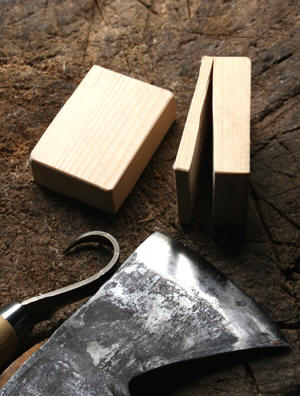 |
|||
| Now take your crook knife and press the blade against the main thicker piece of wood to make a slight indication as to where you would like the blade to be inserted. |
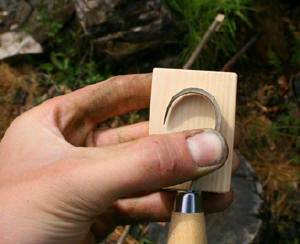 |
|||
 |
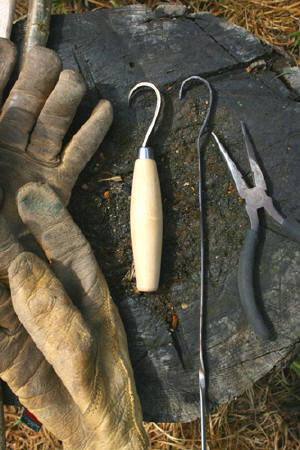 |
|||
|
Put the wood to one side for a moment. For this part you need a metal kebab skewer (or a similar strong thin rod of metal). Heat it in the fire until red hot and easy to bend (a gas blow torch could be used). |
While the metal is hot
You can now easily shape it. You need to make the end the exact same shape as your
crook knife blade. Use a pair of pliers to bend the metal into shape.
Wearing protective gloves is wise. |
|||
| Now heat your bent skewer up again, Really
hot! Take your piece of wood and press the red hot skewer onto the depression you made earlier with the crook knife. |
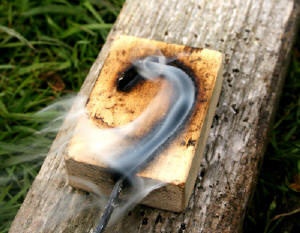 |
|||
| Keep reheating the skewer and pressing it down
in the same place until the burn is as deep as the blade of your crook
knife. You might have to reheat the skewer time after time to get the
depression the right depth. The charred wood may prevent the skewer from
burning deeper, so you can scrape it out with the tip of a knife or
screwdriver and then continue. |
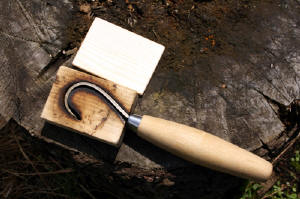 |
|||
| Carve and sand the block and lid to a desired
shape. By clamping them together they will be exactly the same size. |
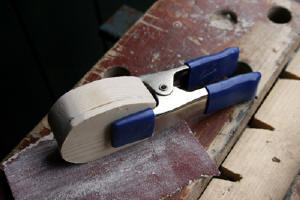 |
|||
| To fit the lid, I drilled a
socket in the main block and glued a piece of dowel to the lid. |
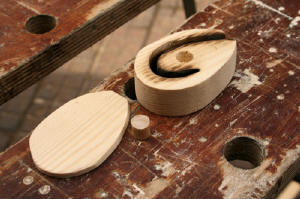 |
|||
| Make sure the dowel and socket are a snug fit,
you don't want the lid to come off when you don't want it to. (If there is
room for two sockets and dowels this would be an improved design as the
lid would be prevented from swivelling around at all.) Make sure that everything is perfectly aligned while the glue sets! |
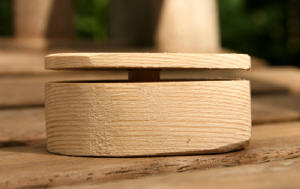 |
|||
| You can oil the wood for a nice
finish. Have fun!
|
 |
|||